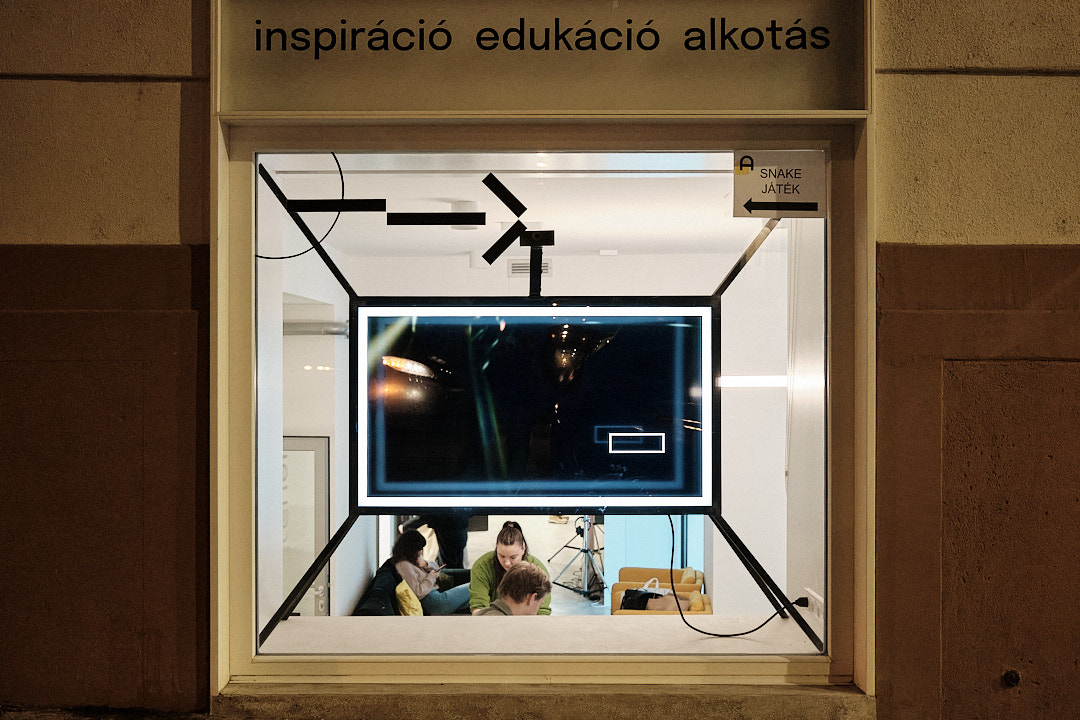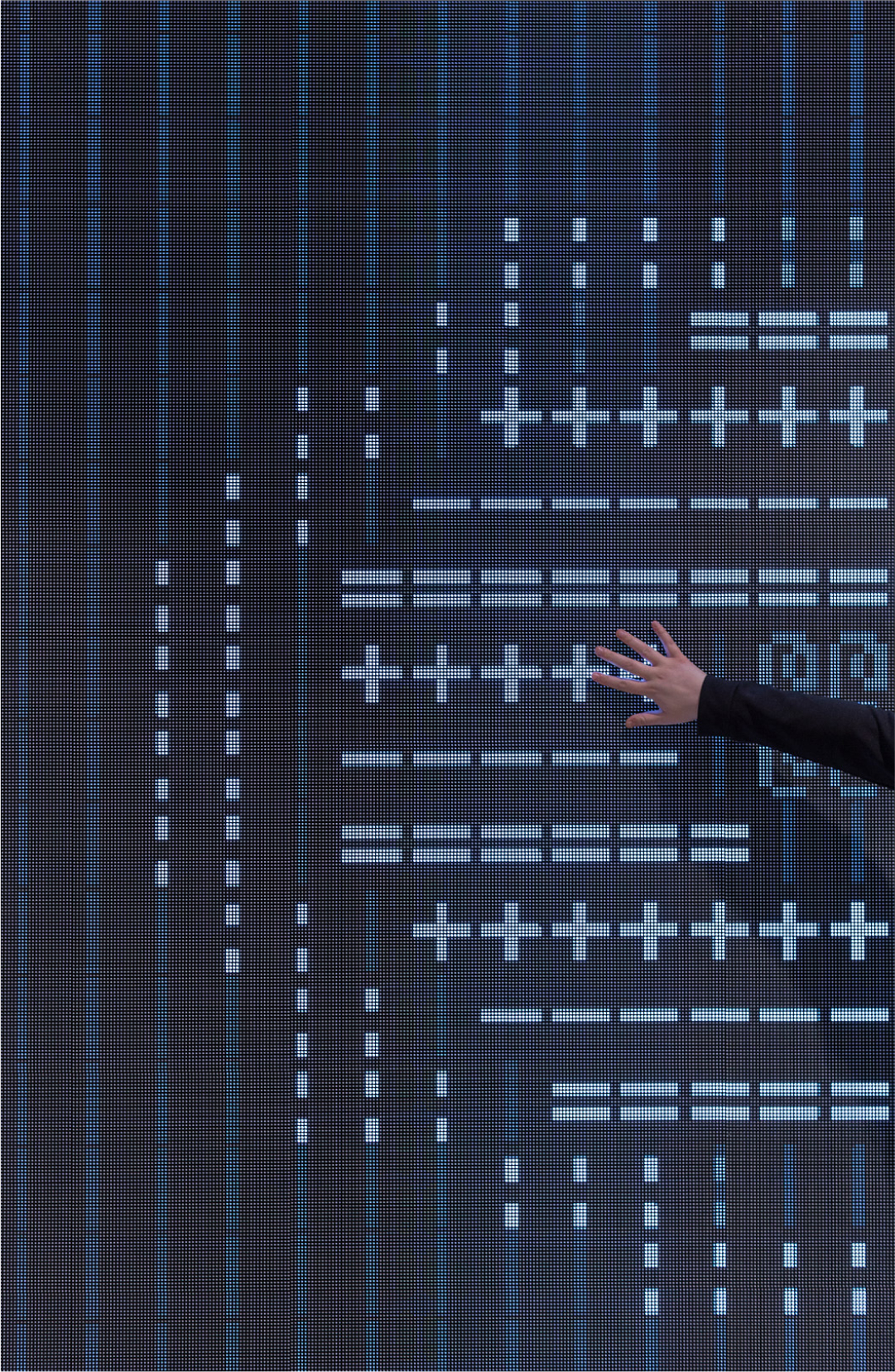
In the inspirational space of the Budapest based art-tech center: Adapter, you will find such art&tech experience elements that utilize digital technologies, bringing you closer to the world of the Adapter and inspiring you for learning and creating! The foundational technologies of the installations, as well as the knowledge necessary for creating your own content, can also be acquired within the space.
The concept of the installations was created by the team behind XORXOR, which specializes in interactive technologies, in the autumn of 2023. The contents displayed and the modes of interaction were inspired by important media art and interaction technologies, interfaces, and effects considered classic today.
Monolith - Interactive LED Wall
The Monolith responds to hand gestures, allowing intuitive control of the content displayed on the LED wall within the tracked boundary by the camera. A special feature of the LED Wall is that it seamlessly wraps around both sides of the column. The resulting surface, measuring 512x512 pixels, displays continuous content, evoking the early world of pixel and ASCII art as a low-resolution display.
Újbuda Dataviz

We bring to life a 1:1500 scale model of the Bartók Quarter with real-time and historical data related to the district. By turning potentiometers, we can switch between different views and bring up new information. Currently, we can navigate between three different contents, and the number of views can be expanded arbitrarily in the future.
data 1 - the age of buildings
data 2 - the 15 minute city, walking distance visualisation from Adapter in the district
data 3 - real-time tram visualisation with popular times of venues.
Slit Scan Mirror
The Showcase installation offers a glimpse into a strange visual reality: we can see in the showcase what the showcase sees. The always changing spectacle based on distortion and repetition offers a unique temporal representation: it is based on the movement of people passing in front of the showcase, the movement of objects, and the combination of the slit-scan effect originally used in photography and filmmaking.

Generative Artwork
Generative Artwork showcases a series of creations where the visuals are generated using programmed algorithms and various simulations. We see fragmented compositions arising from the connection, disintegration, and change in place and color of moving pixels. By scanning a QR code with our smartphone, we can create new audiovisual experiences on the screen placed in the showcase. These unique creations are available as NFT (non-fungible token) crypto art on blockchain-based networks.
Portal

Through the Portal, we can glimpse into other worlds. The installation dynamically adjusts to the viewer’s perspective and movement, ensuring an authentic perspective and a 3D experience. The Portal revisits Johnny Lee’s 2007 Wiimote-based “head tracking” project and combines it with 3D visuals created with Unreal Engine, used in video game development, providing a spectacular experience when displayed on a 4K monitor.
Pac-Man Installation
Progressing through the labyrinth of life and overcoming obstacles: the Pac-Man, developed in Japan, is considered one of the most popular video games of all time. Its name comes from the Japanese word “paku-paku,” which mimics the sound of opening and closing the mouth. In the version created by XORXOR, we control the famous Pac-Man character by yawning: the arcade machine is supplemented with a camera to detect the player’s face and mouth movements, and we can navigate the maze with a joystick. The game’s first version was created for the “Game not a game” exhibition organized by the C3 Foundation in January 2023.



